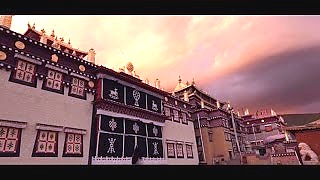A Taoist mountain near LuoYang. Includes a large statue of LaoZi, author of the Dao De Jing.
[640],shadow=true,start=,stop=Not to be confused with LaoJunShan in YunNan.

Live more ...
 The beautiful LaoJunShan 老君山 mountain and temple, HeNan province
The beautiful LaoJunShan 老君山 mountain and temple, HeNan provinceA Taoist mountain near LuoYang. Includes a large statue of LaoZi, author of the Dao De Jing.
[640],shadow=true,start=,stop=Not to be confused with LaoJunShan in YunNan.


|
WuYiShan lies in FuJian province and is a UNESCO World Heritage Site.
|

|
With Brian Berletic / The New Atlas ...
Real freedom versus the illusion of freedom ...
|

|

|
With Walk East ...
|

|
With Wei's Travel ...
|

|
The beautiful outdoor show in HangZhou, ZheJiang province ...
|

|
|

|
A beautiful region of wonderful landscapes and with a part Tibetan population in north west YunNan province ...
|